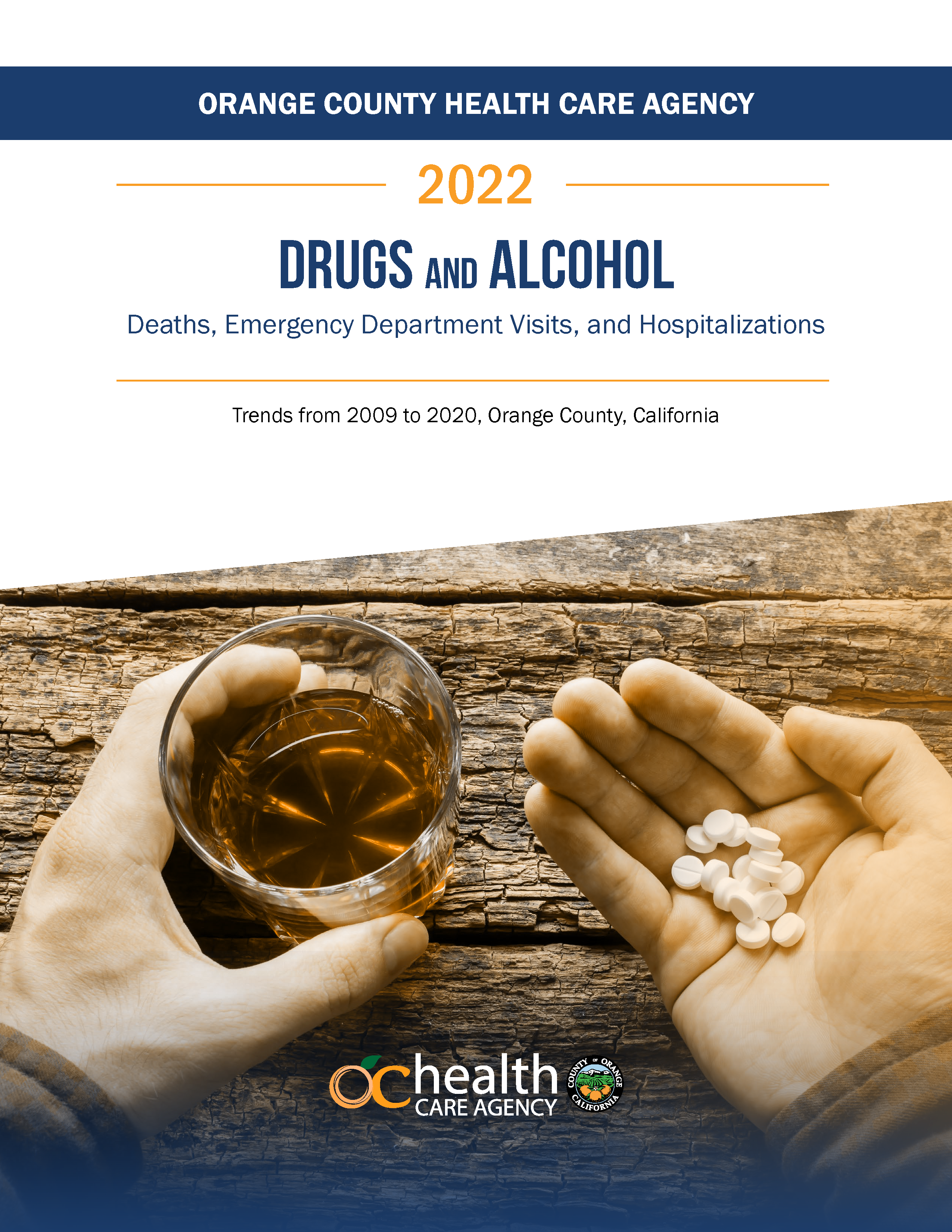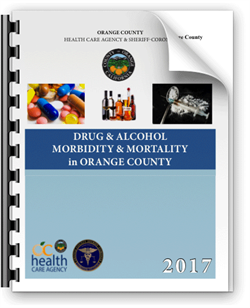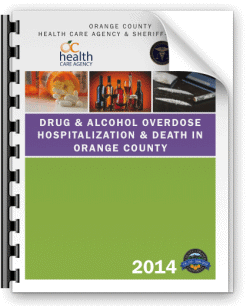This report provides a summary of the leading causes of substance-related overdoses in Orange County. While drug and alcohol-related mortality has generally been rising since 2012, a dramatic rise from 2019 to 2020 attributed to a pandemic-related increase in drug-related deaths. When accounting for all the substances involved in a drug or alcohol-related death, alcohol and opioids were most frequently present. In fact, there was a 45% increase in the number of deaths involving opioids from 2019 to 2020 corresponding to the increased presence of fentanyl in the county, state and nation.

While Orange County has lower drug and alcohol mortality rates compared to the nation and state, notable differences and risk factors were identified for some of our residents. For example, males were nearly two times more likely than females to be hospitalized for and/or die from a drug/alcohol-related incident. Additionally, cities along the coastal and southern regions of Orange County tended to have higher rates of drug/alcohol-related hospitalizations and death than other cities.
Other key findings include:
• Drug/alcohol overdoses, or poisonings, resulted in over 13,000 ED Visits, 6,600 hospitalizations and over 1,000 deaths among Orange County residents in 2020.
• Non-Hispanic whites consistently had the highest rates of mortality from drugs and alcohol, although from 2015, those identified as other race (e.g., Alaska Native/American Indian, multi-race, Other) nearly matched the rates of non-Hispanic whites.
• Males, compared to females, had the highest rates of mortality, as well ED visits and hospitalizations.
• Geographically, the coastal ZIP Codes had the highest rates of mortality, ED visits, and hospitalizations, for the three-year time period of 2018 to 2020.
• The drastic uptick in drug and alcohol-related deaths during the first pandemic year of 2020 was observed at the county, state and national levels. Between 2019 and 2020, there was a 20% increase in mortality in the US, and a 32% increase for California. Orange County’s increase between those years was only slightly higher (34%). However, despite a greater percent increase, Orange County always had a lower mortality rate than the US and California.
This report provides a summary of the leading causes of substance-related overdoses in Orange County. Compiled in collaboration with the Orange County Sheriff-Coroner Division, the report found that the overall rate of drug/alcohol overdose deaths in the County increased by 82% since 2000.
While Orange County has lower drug and alcohol mortality rates compared to the nation and state, notable differences and risk factors were identified for some of our residents. For example, males were nearly two times more likely than females to be hospitalized for and/or die from a drug/alcohol-related incident. Additionally, cities along the coastal and southern regions of Orange County tended to have higher rates of drug/alcohol-related hospitalizations and death than other cities.
Other key findings include:
- Drug/alcohol overdoses, or poisonings, resulted in over 5,500 hospitalizations and nearly 700 deaths among Orange County residents each year.
- There were nearly 70,000 hospital bed-days with an average stay length of 4.3 days, which resulted in approximately $430 million in total charges.
- All Coroner-investigated overdose deaths indicated a majority were accidental (78.6%), with over half involving prescription drugs (51.8%), and 66.8% related to opioid use.
- Over half of all opioid-related overdoses were due to prescription opioids (56.0%; e.g., OxyContin, Hydrocodone).
- Coroner-investigated overdose cases demonstrated females were 1.6 times more likely than males to overdose from prescription drugs and the proportion of prescription drug overdoses increased with age group starting with the 35 to 44 year age group (46.1%) to 65 years and older (87.4%).
The study, done in collaboration with the Orange County Sheriff-Coroner Division, found that the overall rate of drug/alcohol overdose deaths in the County increased by 51% between 2000 and 2012.
Some other key findings of the report include:
- Drug/alcohol overdoses, or poisonings, resulted in over 5,000 hospitalizations and nearly 600 deaths among Orange County residents each year.
- More than half (54%) of all such hospitalizations involved drugs, most of which were poisonings due to benzodiazepine tranquilizers (e.g., Xanax, Valium) or opioid substances (e.g., OxyContin, Heroin).
- Over one-third (35%) of all overdose deaths in the Orange County were due to using multiple drugs and/or alcohol at the same time.
- Coroner investigations found that prescription medications were the most frequently used substances, the majority of which involved opioid pain medications (e.g., OxyContin, Hydrocodone).
- Nearly 8 in 10 overdose deaths were accidental, and nearly half of those unintentional deaths were due to prescription medications.
- Geographically, cities along the coastal regions of Orange County tended to have higher rates of drug/alcohol-related hospitalizations and death than other cities.